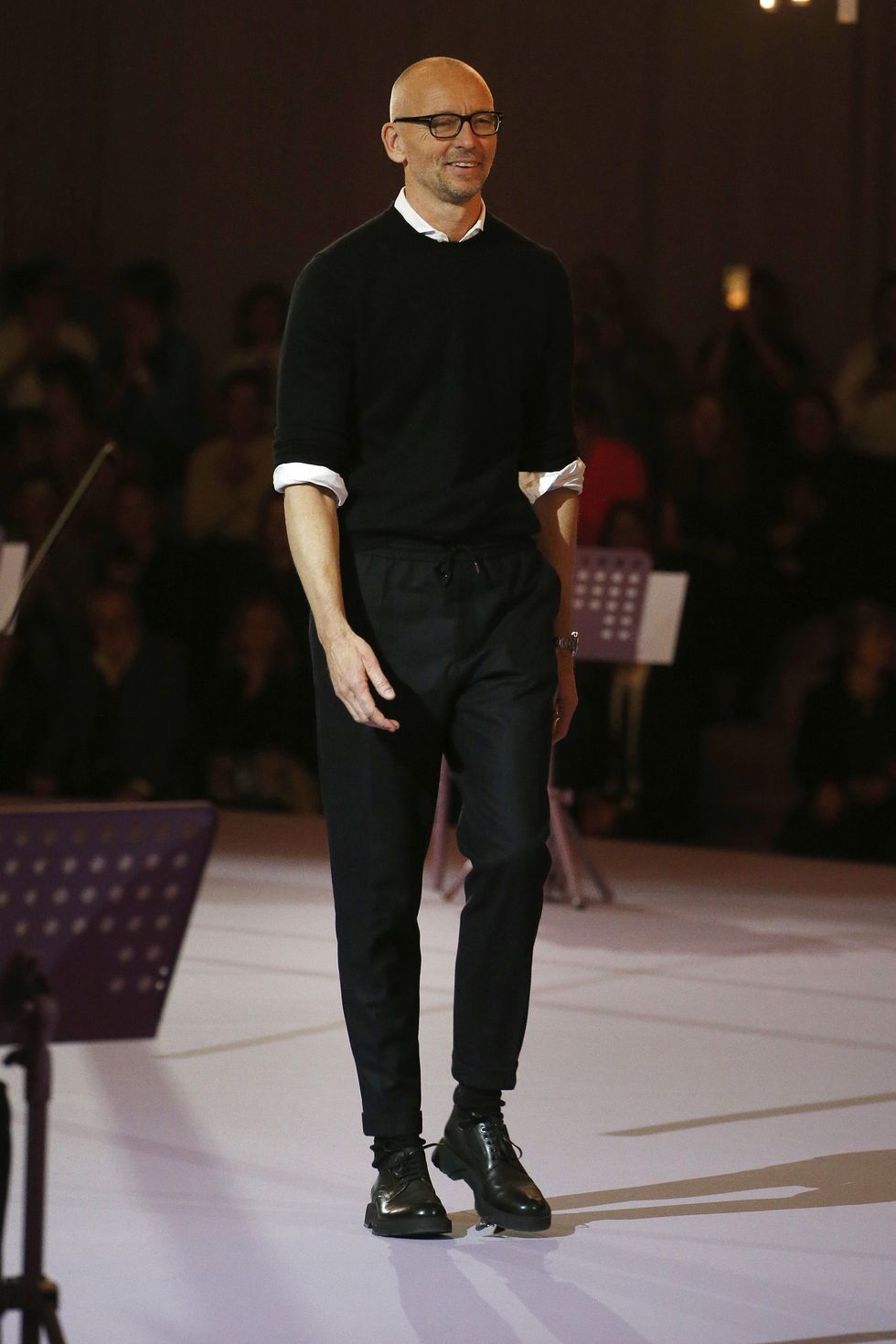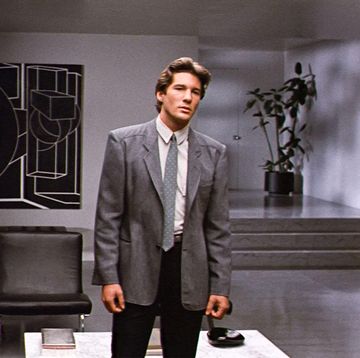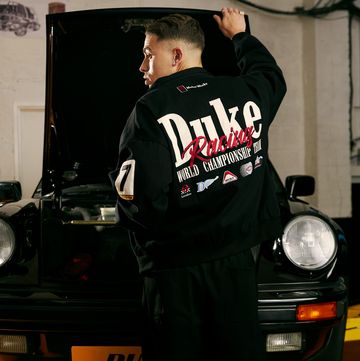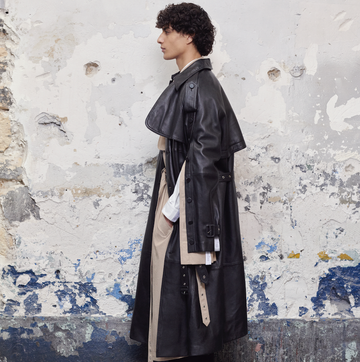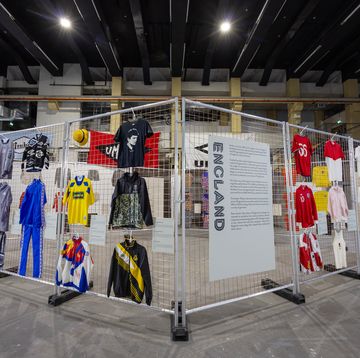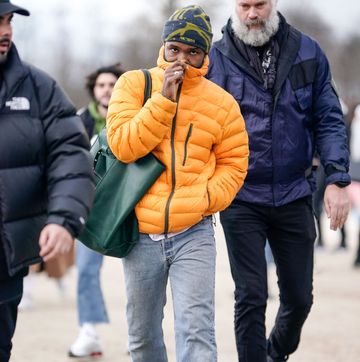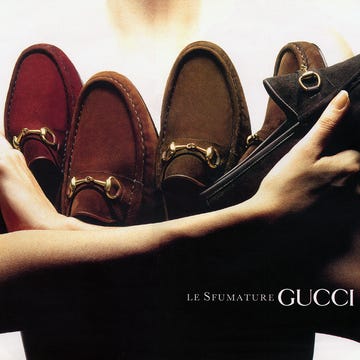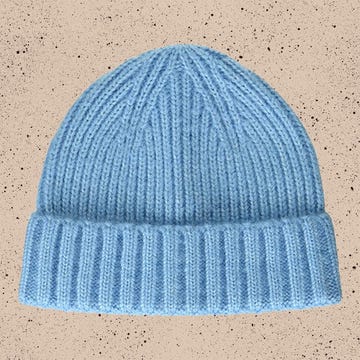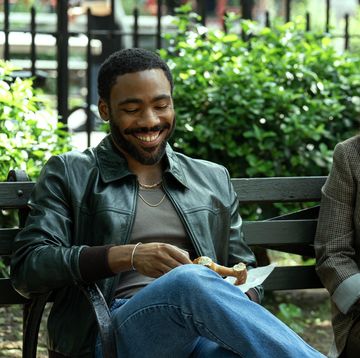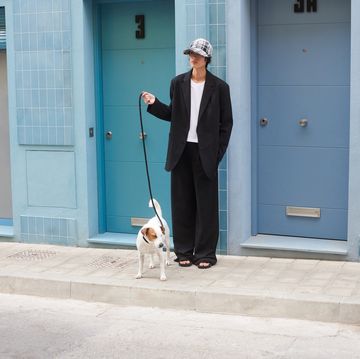Everything at Boss is calm. “We work always very, very quiet,” says design director Ingo Wilts as he strolls serenely amongst uniform rows of clothing. Every garment is spaced equally, every rail perfectly in line with the next. It is the afternoon before the Autumn/Winter 2020 show and Wilts is relaxed, sipping a decidedly un-bouji white Americano (regular milk and everything) as models waft about in potential looks and staffers flit around, carrying alternative belts and blazers. Wilts explains that he and the team will likely work into the wee hours. Unperturbed, he lifts a nearby double-breasted jacket to demonstrate how the style will feature heavily in the collection.
Contrary to reports, the suit is in fact alive and well and living in mainland Europe. It’s good news to Wilts and fans of the quiet, Teutonic luxury of Boss. “For us, tailoring is our heritage and whenever we start designing we always start with our heritage,” says Wilts. “We build on suits and coats. You see the amount of shirt and tie looks [in the collection]… even the casual looks are dressed up. I always said that the suit is not dead at all, [but] especially after this season.”
The collection is indeed jammed with suits. The best are those in a shade of dusty purple, which Wilts lists as ‘heather’. The colour flashes through the entire collection, but in accordance with the trend for tone-on-tone formalwear (see Louis Vuitton, Lanvin, Ralph Lauren), the shade works best when it comes as a whole. There’s a full-heather tuxedo, cummerbund ‘n’ all, but our winner is the aforementioned DB, with corresponding shirt and tie. The colour is at once slick and peaceful - the kind of thing the Angel Gabriel might wear to the Met Gala. The jackets are cut from high-twist wool that gives a wonderful structure and “crispiness”, explains Wilts. (Heather wasn’t the only statement colour to pop on the runway, in fact for every sand and navy, there was a rich red or deep ochre.)
Coats were damn good, too. One of the starting points for the collection, beyond the archive of apparel, was the archive of Boss ad campaigns. In the late-Eighties and early-Nineties, the brand ran black and white street scenes of chiselled, jockish men – riding bikes or loitering on collegiate corners – in voluminous tailoring and raglan sleeve overcoats so vast you could shelter a whole lacrosse team underneath. Those coats have been re-upped in less absurd, but still oversized, silhouettes, and recut in modern, functional fabrics. Elsewhere, Wilts has breathed extra surface area into classically slimmer pieces. “There are pieces you know from the past – an easy parka, for example, but with a little bit more volume. These are all just traditional pieces that we reinvented. We didn’t start from zero.”
And in line with the general Matrixification of menswear, leather features heavily. “When I started at Hugo Boss we sold so many leather blazers and then it went down and no one wanted leather so much. But I feel like leather is an important product this season, so we do a lot of these leather coats, blazers, even some fancy little pants with different constructions. They look quite sporty, and it’s thick leather, but still very soft.”
The future-fashion-biker vibe continues into the footwear, with leather wellingtons and an especially mega pair of just-chunky-enough lace-up boots. Loafers that were once rounded and bulbous now run to a Teddy-boy point at the toe. It’s early steps for the industry as a whole, but long may this return to sharpness continue.
Like this article? Sign up to our newsletter to get more delivered straight to your inbox

